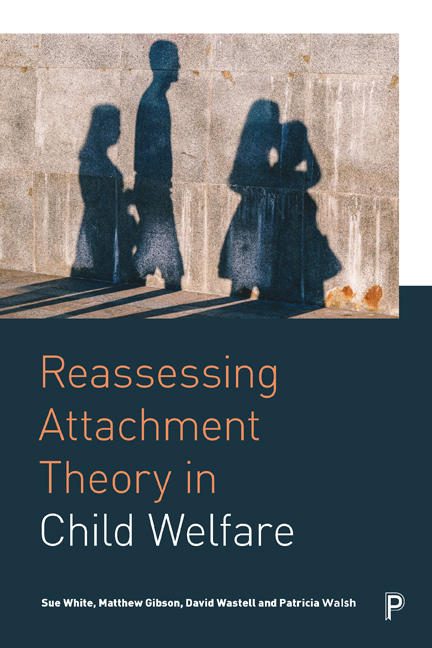Book contents
- Frontmatter
- Contents
- List of Figures, Table and box
- About the Authors
- Acknowledgements
- Preface: Becoming Attached to Attachment Theory
- 1 Love is a Wondrous State: Origins and Early Debates
- 2 Social work and the Attachment Story: a Felicitous Bond?
- 3 Shaping Practice: Prescribing Assessment
- 4 Practising Attachment Theory in Child Welfare
- 5 Exhibiting Disorganised Attachment: not even Wrong?
- 6 Breaking the back of love: Attachment Goes Neuro-Molecular
- Coda: love Reawakened?
- References
- Index
6 - Breaking the back of love: Attachment Goes Neuro-Molecular
Published online by Cambridge University Press: 23 February 2021
- Frontmatter
- Contents
- List of Figures, Table and box
- About the Authors
- Acknowledgements
- Preface: Becoming Attached to Attachment Theory
- 1 Love is a Wondrous State: Origins and Early Debates
- 2 Social work and the Attachment Story: a Felicitous Bond?
- 3 Shaping Practice: Prescribing Assessment
- 4 Practising Attachment Theory in Child Welfare
- 5 Exhibiting Disorganised Attachment: not even Wrong?
- 6 Breaking the back of love: Attachment Goes Neuro-Molecular
- Coda: love Reawakened?
- References
- Index
Summary
‘It makes a more compelling case, because it's biological. I think people, when they think something is purely psychological, or you know, this is a social problem, because of the way that this individual is thinking about their life, or thinking about the world, it's not as real. But, if you say it's epigenetic, then it comes into the same territory as cancer, infectious disease, and so it can create momentum, that I think psychological problems don't seem to be able to generate.’ (Senior epigenetics researcher 1)
‘I think that my feeling of where epigenetic science leads us is toward the fact that intervention could be useful … We’re really not doomed, we just have to do the right interventions. I think this is where epigenetics intersects with politics and with economics and making the argument that economically it's a good business decision to invest in these kids early in life because we have a lot of evidence that that will make a difference, and we have a mechanistic explanation how these differences can work. So it's not just voodoo science, just belief, just kind of left-wing ideology that government intervention would work. Good policies should be able to epigenetically alter how genes work, and therefore override any underlying genetic differences.’ (Senior epigenetics researcher 2)
Biology is currently big news. The quotations above are taken from interviews with two primary researchers in the epigenetics and neuroscience of parenting and child development. The first exemplifies a pragmatic approach, aimed at making a more potent case to policy makers; the second has transparently transformational aspirations. People can be fixed, but does this fixing have a dark side? Do we want government policies to alter how genes work and ‘override’ genetic differences? Who decides who is doomed?
We noted in the last chapter that concerns about the modest effect sizes associated with much primary work on disorganised attachment has led to the search for genetic and epigenetic factors that might explain variation in outcomes and susceptibilities. Alongside this, attachment scholars and researchers have sought new alignments with developments in evolutionary biology and developmental neuroscience.
- Type
- Chapter
- Information
- Reassessing Attachment Theory in Child Welfare , pp. 107 - 122Publisher: Bristol University PressPrint publication year: 2019

